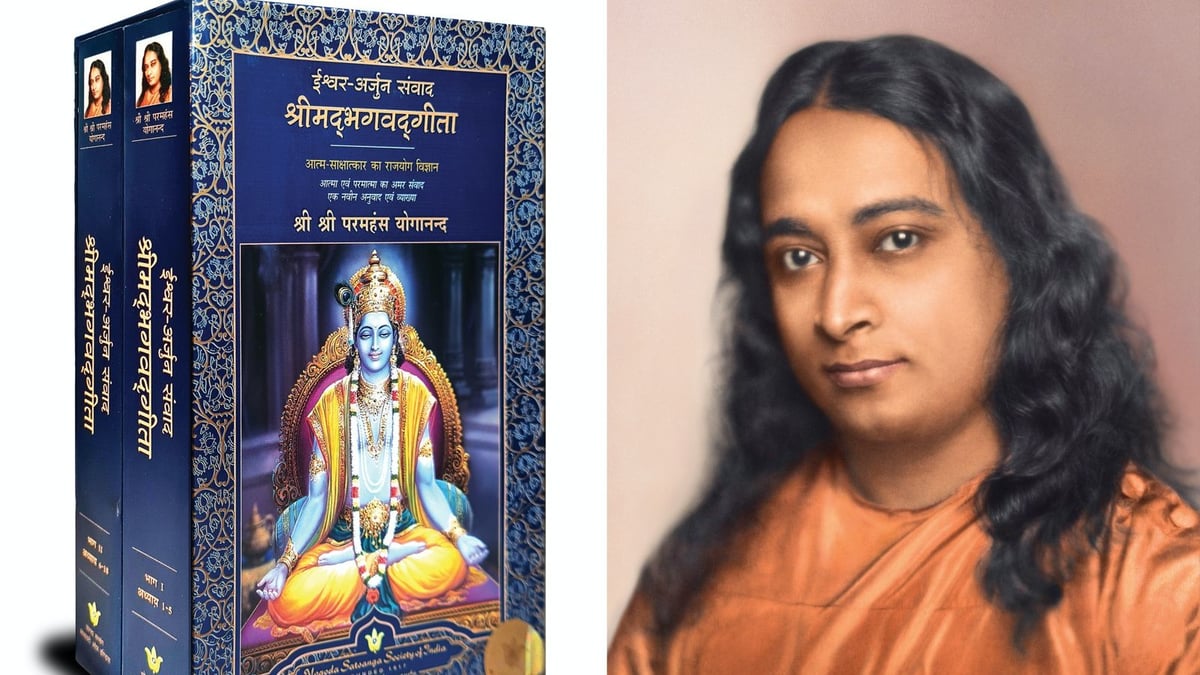Sarvdharmaanparityajya mamekam sharanam vraj. Aham twan sarvapapaybhyo mokshayishyami ma shuchah.
[अन्य सभी धर्मों (कर्तव्यों) का त्याग करके मात्र मेरी ही शरण में रहो; मैं (उन कम आवश्यक कर्तव्यों को न करने से उत्पन्न) सब पापों से तुम्हें मुक्त कर दूँगा। शोक मत करो!]
– Chapter 18, Verse 66
The great yogi Sri Sri Paramahamsa Yogananda, in his book “God-Arjuna Dialogue (Translation and comprehensive interpretation of Srimad Bhagavad Gita written by Maharishi Vedvyas), has translated this statement given by Lord Krishna to his ideal disciple Arjun in these words. If you give up all ego-driven duties and perform all divine duties as per my instructions. If you remain in samadhi with me, you will be free.
religious news
Yoganandaji – author of the spiritual classic, “The Yogi Kathamrita,” and who founded the Yogoda Satsanga Society of India/Self Realization Fellowship more than a century ago. It is said that the entire knowledge of the universe is contained in just seven hundred verses of the Gita and “Wherever a person is on the path of returning to God, the Gita will shed light on that part of his journey.
Yoganandaji’s work of interpreting the Gita began many years ago under the intuitive guidance of his Guru Swami Shri Yukteswarji and Paramagurus Sri Sri Lahiri Mahasaya and Mahavatar Babaji. Babaji had revived the same sacred Kriya Yoga technique, which has been mentioned twice by Lord Krishna in the Srimad Bhagavad Gita. As Yoganandaji has explained. “With the help of a God-given Guru, one learns to pierce the hard shell of language and obscurity and reach the core of the truth contained in the words of the scriptures by using the key of intuitive understanding.
Gurudev’s final review and detailed description of the profound philosophical concepts of the Gita was done in solitude in a small ashram in the Mohavi Desert of California in the months before his Mahasamadhi in 1952. Reminiscing about that place, a monk said that the vibration in that room (where Yoganandaji was working) was incredible. It was like entering God.
The purpose of this unique effort of Yoganandaji was not to understand and explain the Gita according to his own concepts or by “intellectually distorting it”, but to provide to the world an interpretation of the actual dialogue between Shri Krishna and Arjuna which Maharishi Vyas himself experienced. and expressed in devotional insight “in various states of ecstasy”.
Hence “God-Arjuna Dialogue” is a description of the dialogue between the omnipresent Brahma (whose symbol is Shri Krishna) and the soul of the ideal devotee (whose symbol is Arjuna). It becomes clear to a discerning devotee from the very first chapter that the historical background of the Kurukshetra war is used to convey the pure discriminating intellect in tune with the soul of every individual (the lineage of Pandu) and the blind mind held in bondage to the senses confused by the ego. This has been done to show the constant spiritual and psychological war between (the blind king Dhritarashtra and his evil children).
With the help of Lord Krishna (Guru or the insight arising from awakened self-consciousness or meditation), “to liberate His kingdom from the dominion of the ego and its army of evil mental tendencies” and to establish the all-satisfying sovereignty of Brahman through physical, mental and Spiritual battle is necessary, just as Shri Krishna provided immense solace to the dejected Arjuna, similarly Yoganandaji in his indescribable words advises the Arjuna devotee present in every true seeker, “Each person has to fight his own battle of Kurukshetra. This war is simply not winnable. But it is also in accordance with the divine arrangements of the universe and the eternal relationship between the soul and God. This is a war that will have to be won someday.
Author: Sandhya S. Nair

